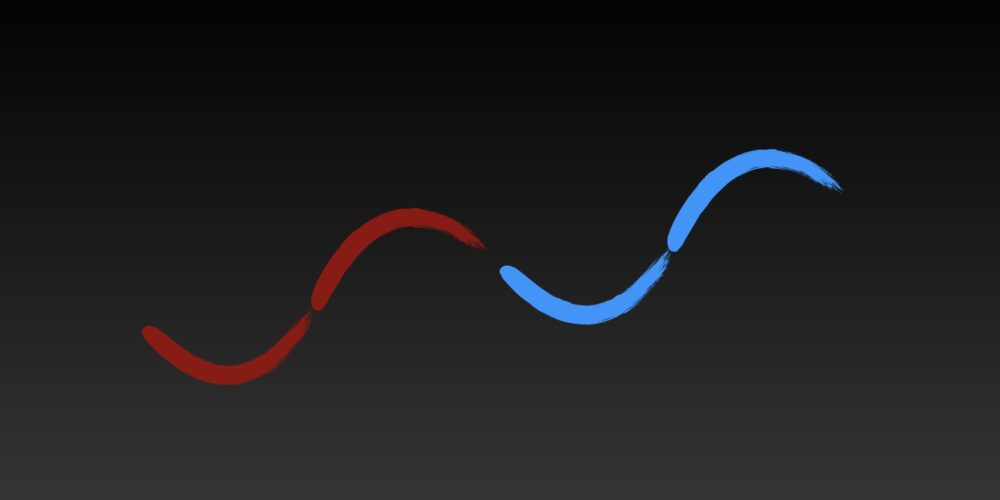How to understand and use the S-curve

Let’s talk about the letter ‘S’ today. Picture it lying on its side.
That’s a curve you should be paying attention to—the S-curve. If you’ve never heard of it, it’s high time you did, because once you see the S-curve, you start seeing it everywhere—in business, education, social movements, and even biology.
So, what is this mysterious S-curve, and why does it seem to govern so many things in life? The S-curve is a pattern of growth that starts slow, picks up speed, and inevitably hits a ceiling. It comes in three phases.
The first is the slow start. You’ve just launched something—a new product, a business, or a personal project—and things are moving slower than you’d like, maybe even declining. Frustrating, right? That’s the bottom of the curve.
Next comes the big leap. Suddenly, all that hard work starts to pay off—if your initiative is solid. Learning has occurred, the pieces are now in place, and growth accelerates. You might even feel unstoppable. Welcome to the steep, rapidly rising middle of the curve.
But eventually, reality sets in, and you hit the ceiling. The sky-high growth starts to level off, and things slow down. Here’s where doing more of what worked before can get dangerous. If you don’t change things up, you risk not just plateauing but potentially plunging into decline.
The S-curve happens because nothing grows forever. Markets saturate, resources stretch thin, learning curves flatten, and complacency creeps in. You hit natural limits, and that’s when the S-curve flattens out too.
The S-curve isn’t just some random pattern—it’s how things work in the real world. In the beginning, you’re doing something new and difficult, fighting inertia. Whether it’s getting a product off the ground or starting a movement, everything new faces resistance. That’s why the start is slow.
If you can push through that early friction (and many can’t), you reach a tipping point. Growth accelerates, and people start noticing, buying, joining, or supporting. You’re in the sweet spot of the curve, riding a wave of momentum.
But here’s the catch: nothing grows indefinitely. At some point, you’ll hit limits. Maybe your market saturates, maybe your innovation plateaus, maybe competitors catch up or regulators clamp down. That’s when growth slows. You’re at the top of the S-curve—and now you need to rethink.
Not paying attention to the S-curve can get you in trouble. Whether you’re running a business, learning a new skill, or growing anything—this is a curve you need to watch closely. The S-curve is a story most businesses can’t escape. Products, strategies, companies, even entire industries go through it. The big question is: can you recognize where you are on the curve, and more importantly, do you know what to do about it?
Take smartphones, for example. In the early 2000s, they were at the bottom of the S-curve—a niche product for techies. Then the iPhone came along, followed by Android phones, and boom—smartphones hit the steep part of the curve. Sales skyrocketed, and shareholders rejoiced. Fast forward to today, and you’re at the top of the S-curve: most people who want a smartphone already have one, and there isn’t much more innovation that can be squeezed into a rectangle. The market is mature, and growth is incremental at best. Apple and Samsung know this, which is why they’re already looking to the next big thing (AR, AI, and more).
The S-curve isn’t just a business concept, though—it shows up in life too. Learning a new skill? It starts painfully slow. You struggle with the basics, feel like you’re getting nowhere, and wonder if you’ll ever improve. But stick with it, and soon enough, you may hit the sweet spot—suddenly, you’re improving fast, and you feel unstoppable.
But—there’s always a but. Sooner or later, that rapid progress slows. Having mastered the basics, improvements come slower, harder, and at a cost. That’s the top of the S-curve in action.
The big takeaway: don’t get blindsided by the curve. Recognize where you are and act accordingly. If you’re in the early phase, don’t panic—double down on learning, testing, and building a strong foundation. If your idea is solid and your work good, rapid growth is likely to come.
If you’re riding high in the fast-growth phase, don’t assume it’ll last forever. Start thinking about what comes after the top of the curve. Are you innovating enough? What new S-curve are you prepping for? The truly wise do this before the old curve flattens out. That’s when it’s time to launch the next thing, the next idea, the next curve.
And if you’re at the top—well, it’s time to face the reality that you’ve hit a ceiling. Don’t go into denial mode; get busy on fresh things. The S-curve is a pattern you can’t avoid, but it’s one you can master. Whether in business or life, the trick is to know where you are and what to do next. Don’t be a victim of the curve. Ride it.
(Sunday Nation, 15 September 2024)

Buy Sunny Bindra's new book
The X in CX
here »
Popular Posts
- You are who you hang out withSeptember 28, 2025
- Why your mother was right about your anxietyOctober 12, 2025
- The balance sheet that mattersOctober 5, 2025
- Use AI, but don’t lose youOctober 19, 2025
- Born knowing the waySeptember 21, 2025















